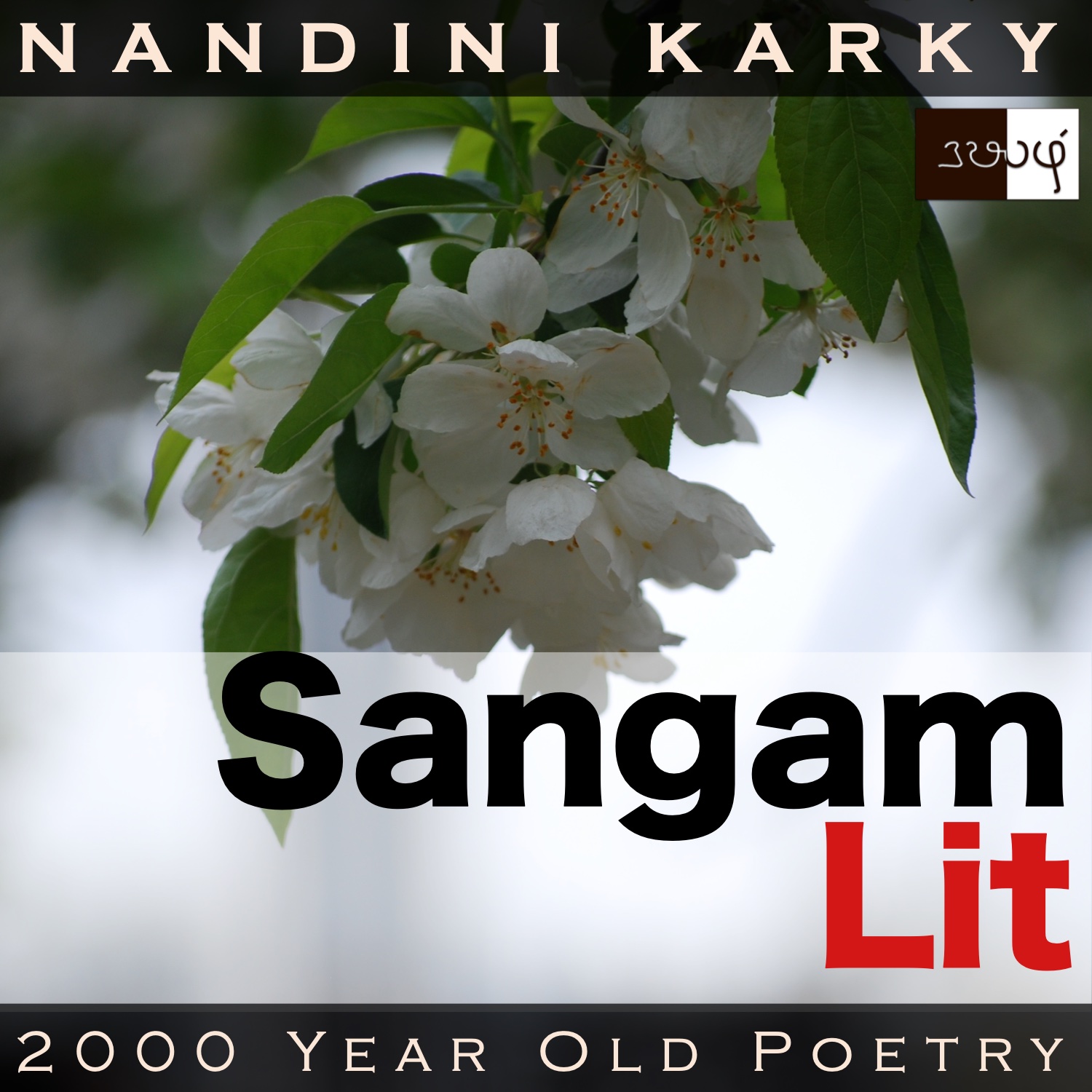Podcast: Play in new window | Download
Subscribe: Apple Podcasts | Spotify | Amazon Music | Android | iHeartRadio | Email | TuneIn | RSS | More

In this episode, we observe a lady’s anxiety about her reputation, as depicted in Sangam Literary work, Kurunthogai 311, penned by Chenthan Keeranaar. The verse is situated in the coastal regions of ‘Neythal’ and speaks in the voice of the lady to the confidante, passing on a subtle message to the man, listening nearby.
அலர் யாங்கு ஒழிவ-தோழி!-பெருங் கடல்
புலவு நாறு அகன் துறை வலவன் தாங்கவும்,
நில்லாது கழிந்த கல்லென் கடுந் தேர்
யான் கண்டனனோ இலனோ பானாள்
ஓங்கல் வெண் மணல் தாழ்ந்த புன்னைத்
தாது சேர் நிகர்மலர் கொய்யும்
ஆயம் எல்லாம் உடன் கண்டன்றே?
‘He has been spotted’ is the core message of this verse. The opening words ‘அலர் யாங்கு ஒழிவ’ meaning ‘how will the spread of these rumours cease’ echoes the foremost concern of a young lady in Sangam times, at least according to the verses. A sense of swiftness can be found in ‘நில்லாது கழிந்த கல்லென் கடுந் தேர்’ meaning ‘a strong chariot that went past without stopping, with a loud sound’. That oft-mentioned, resourceful tree of the coastal regions greets us in ‘ஓங்கல் வெண் மணல் தாழ்ந்த புன்னை’ meaning ‘the laurel wood trees with low-lying shoots on the soaring white sand mounds’. Ending with the words ‘ஆயம் எல்லாம் உடன் கண்டன்றே’ meaning ‘all the playmates saw that together, they did’, the verse welcomes us to know more.
What was it that the lady’s playmates caught? The context reveals that the man and lady were leading a love relationship and the man was trysting with the lady by night. One night, observing the man arriving for the tryst, pretending not to notice him, but making sure he’s in earshot, the lady says to the confidante,”How will this slander end, my friend? In the flesh-smelling, wide shores near the huge ocean, although the charioteer tried to rein it, unstopping, the sturdy chariot streaked past with a loud sound. Whether I got to see that or not at midnight, all our playmates, plucking bright white, pollen-filled flowers from the low-lying branches of the ‘punnai’ tree, standing on soaring white sand mounds, got to see it, for sure!” With these words, the lady is conveying to the listening man that slander about their relationship will soon spread in their town and the only way to avoid this, is to seek her hand in marriage.
Another case of ‘marry me, marry me’! The lady starts with a question to her friend asking what would make that slander stop. When we raise our eyebrows asking, what slander, the lady brings to fore a scene that unfolded in the wide shores that smell of flesh. Here, even though the charioteer tried to ride it gently, the man’s chariot came striding with a loud sound. Continuing with a sigh, the lady says whether she happened to see the chariot or be graced by the man’s presence, or not, all their playmates, who were out to pluck ‘punnai’ flowers from reachable branches on those tall sand mounds, got to see it, for sure. Now, we understand from where the slander would arise. From the wagging mouths of these young girls, who will undoubtedly gossip about that striking chariot and whom it’s coming to meet. This would be followed by those words reaching the ears of the lady’s family, which would then be followed by the lady’s confinement at home. So, please cut to the chase, and seek my hand in marriage, the lady hints to the man.
Beyond the relationship dynamics of love and marriage between the man and lady, we learn of two interesting facts – One, the mention of flesh-smelling wide shores talks about how those spaces were used in the fishing trade. Either the fish was left to dry or was traded there, and so, it was a busy route, we understand. Next, is the preoccupation of these ancient Tamil girls in plucking ‘punnai’ flowers. In contemporary Tamil society, hardly one or two flowers are fit to be worn by women on their tresses, and that too, not preferred by many women, especially in urban areas, whereas as depicted in Sangam Literature, the women then seemed to be open to a wide variety of flowers. Besides, the pollen of these ‘punnai’ flowers are said to have high medicinal value and help with a long list of illnesses such as cold, migraine, giddiness, stomach ulcers and skin diseases. Although the women are simply beautifying themselves by wearing these flowers, could it conceal a seamless delivery of natural therapy?




Share your thoughts...